-
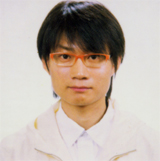 Ki-Won Lee Receives Best Student Paper Award
Ki-Won Lee Receives Best Student Paper Award
Ki-Won Lee, a doctoral student of Materials Science & Engineering, has received the Best Student Paper Award ‘Motorola Fellowship Award’ at 2007 Electronic Components and Technology Conference (ECTC).
Lee’s paper is about a new bonding process of anisotropic conductive film using ultrasonic wave, which applies ultrasonic wave, instead of thermal compression, at the room temperature to reduce the process time from ten to three seconds.
The recipients of Motorola Fellowship Award are selected by IEEE Components, Packaging and Manufacturing Technology Society, and Motorola awards special scholarship to recipients. The ECTC is the world’s largest yearly conference concerning electronic packaging technologies with more than 1,000 attendees and more than 300 presented papers.
2007.07.02 View 19913
Ki-Won Lee Receives Best Student Paper Award
Ki-Won Lee Receives Best Student Paper Award
Ki-Won Lee, a doctoral student of Materials Science & Engineering, has received the Best Student Paper Award ‘Motorola Fellowship Award’ at 2007 Electronic Components and Technology Conference (ECTC).
Lee’s paper is about a new bonding process of anisotropic conductive film using ultrasonic wave, which applies ultrasonic wave, instead of thermal compression, at the room temperature to reduce the process time from ten to three seconds.
The recipients of Motorola Fellowship Award are selected by IEEE Components, Packaging and Manufacturing Technology Society, and Motorola awards special scholarship to recipients. The ECTC is the world’s largest yearly conference concerning electronic packaging technologies with more than 1,000 attendees and more than 300 presented papers.
2007.07.02 View 19913 -
 KAIST Business School Opens Homepage !!!!
KAIST Business School, founded in September, 2006 to efficiently manage the Graduate School of Management, founded in 1996, the Graduate School of Finance and the Graduate School of Information & Media Management, both founded in March 2006, now opens its homepage to provide more information on the school.
Click here to go to the homepage
2007.07.02 View 15076
KAIST Business School Opens Homepage !!!!
KAIST Business School, founded in September, 2006 to efficiently manage the Graduate School of Management, founded in 1996, the Graduate School of Finance and the Graduate School of Information & Media Management, both founded in March 2006, now opens its homepage to provide more information on the school.
Click here to go to the homepage
2007.07.02 View 15076 -
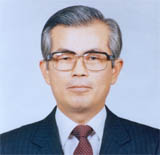 Emeritus Professor Lee Dies
Jeong-Oh Lee, Emeritus Professor of Mechanical Engineering, died of his chronic disease on June 15, 2007 at his age of 76.
The late Lee began his lecturing career at Mechanical Engineering Department in 1973 and had made considerable devotions to the education and development of mechanical engineering for 24 years. As the former Minister of Science and Technology, former President of Korea Institute of Science and Technology, and former President of Korea Advanced Institute of Science and Technology, he also has made significant contributions to the development of Korean science and technology.
Particularly, he played key roles in vitalizing Daeduk Research Complex (DRC) by planning and executing the movement of government-funded institutes despite the inactive research atmosphere in the early 1980s. He also set up the Extended Council for Technology Promotion, consisting of many distinguished persons from diverse fields under the supervision of the President, to make significant contributions to the promotion and spread of technology innovation among governmental and civil enterprises. He received Cheongjo Geunjeong Medal in 1985 and never stopped his devotion to the education of young students even after his retirement in 1997.
<Funeral Notice>- Date: Sunday, June 17, 2007 at 7 am.- Place: Eulji University Hospital, Daejeon- Graveyard: Cheonan graveyard- Bereaved family Wife Ok-Hyang Kang Son Jong-Sun Lee, Professor of Handong University Han-Sun Lee, LG Chemicals Daughter Myung-Ae Lee Son-in-law Young-Soo Lee, Korea Institute of Industrial Technology- Contact Point: C.P. 019.480.2451 (Han-Sun Lee)
2007.06.18 View 18325
Emeritus Professor Lee Dies
Jeong-Oh Lee, Emeritus Professor of Mechanical Engineering, died of his chronic disease on June 15, 2007 at his age of 76.
The late Lee began his lecturing career at Mechanical Engineering Department in 1973 and had made considerable devotions to the education and development of mechanical engineering for 24 years. As the former Minister of Science and Technology, former President of Korea Institute of Science and Technology, and former President of Korea Advanced Institute of Science and Technology, he also has made significant contributions to the development of Korean science and technology.
Particularly, he played key roles in vitalizing Daeduk Research Complex (DRC) by planning and executing the movement of government-funded institutes despite the inactive research atmosphere in the early 1980s. He also set up the Extended Council for Technology Promotion, consisting of many distinguished persons from diverse fields under the supervision of the President, to make significant contributions to the promotion and spread of technology innovation among governmental and civil enterprises. He received Cheongjo Geunjeong Medal in 1985 and never stopped his devotion to the education of young students even after his retirement in 1997.
<Funeral Notice>- Date: Sunday, June 17, 2007 at 7 am.- Place: Eulji University Hospital, Daejeon- Graveyard: Cheonan graveyard- Bereaved family Wife Ok-Hyang Kang Son Jong-Sun Lee, Professor of Handong University Han-Sun Lee, LG Chemicals Daughter Myung-Ae Lee Son-in-law Young-Soo Lee, Korea Institute of Industrial Technology- Contact Point: C.P. 019.480.2451 (Han-Sun Lee)
2007.06.18 View 18325 -
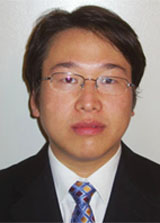 KAIST Graduate Selected As Winner of IEEE Outstanding Young Engineer Award
- First Korean winner of IEEE Outstanding Young Engineer Award
Dr. Myung-Jin Rhim, Bachelor, Master, and Ph.D of KAIST, has been selected to receive 2007 Outstanding Young Engineer Award by the Institute of Electrical and Electronics Engineers (IEEE) Components, Packaging, and Manufacturing Technology (CPMT) Society. Dr. Rhim will be the first Korean winner of the award.
Dr. Rhim received his Ph.D of Materials Science & Engineering at KAIST in 2001 and has made outstanding research outputs, such as 28 papers at international journals covered by Science Citation Index (SCI) and 12 international patents. He has been also listed in Marquis Who’s Who in the World, Who’s Who of Emerging Leaders, Who’s Who in Asia, and Outstanding Intellectual of the 21st Century, 21st Century Award for Achievement published by the International Biographical Centre of Cambridge, England.
IEEE CPMT Society has yearly awarded the Outstanding Young Engineer Award to a scientist or engineer of electronic components, packaging, and manufacturing technology prior to his or her 35th birthday in recognition of his or her research achievements. Dr. Rhim is now in his postdoctoral program at Georgia Institute of Technology in USA.
2007.06.14 View 18917
KAIST Graduate Selected As Winner of IEEE Outstanding Young Engineer Award
- First Korean winner of IEEE Outstanding Young Engineer Award
Dr. Myung-Jin Rhim, Bachelor, Master, and Ph.D of KAIST, has been selected to receive 2007 Outstanding Young Engineer Award by the Institute of Electrical and Electronics Engineers (IEEE) Components, Packaging, and Manufacturing Technology (CPMT) Society. Dr. Rhim will be the first Korean winner of the award.
Dr. Rhim received his Ph.D of Materials Science & Engineering at KAIST in 2001 and has made outstanding research outputs, such as 28 papers at international journals covered by Science Citation Index (SCI) and 12 international patents. He has been also listed in Marquis Who’s Who in the World, Who’s Who of Emerging Leaders, Who’s Who in Asia, and Outstanding Intellectual of the 21st Century, 21st Century Award for Achievement published by the International Biographical Centre of Cambridge, England.
IEEE CPMT Society has yearly awarded the Outstanding Young Engineer Award to a scientist or engineer of electronic components, packaging, and manufacturing technology prior to his or her 35th birthday in recognition of his or her research achievements. Dr. Rhim is now in his postdoctoral program at Georgia Institute of Technology in USA.
2007.06.14 View 18917 -
 Largest Number of Teams Selected From KAIST at 2007 LG Global Challenger Contest
Largest Number of Teams Selected From KAIST at 2007 LG Global Challenger Contest
The largest number of teams has been selected from KAIST at 2007 LG Global Challenger Contest
Despite of the record high competitive rate of 30/ 800, the largest number of teams has been selected from KAIST at 2007 LG Global Challenger Contest.
LG Global Challenger Contest is an exploration program where undergraduate and graduate students perform explorations on their own schedules and share the results with the public online.
Thus far, about 1,500 students from 410 teams have participated in the contest, and the contest is now regarded as the most representative overseas exploration program among university students, showing the average competitive rate of 1/ 20.
Exploration teams are selected by thorough examination and the members of selected teams have to complete the preliminary education program. The exploration teams will perform two-week overseas exploration on their own schedule during the summer vacation and their exploration activities will be relayed through the official web site of the contest by the designated team for online relay.
The exploration teams are obliged to submit the result reports, and the winners of the prize for good reports will be granted scholarship and employment privileges. The followings are the selected teams from KAIST:
Name: U-rekaTopic: U-Eco City, Advanced city where nature and human are well harmonizedMembers: A-Chim Chang (Department of Civil and Environmental Engineering)Hyuk-Il Cho (Department of Computer Sciences)Jung-Hyun Hong (Department of Industrial Engineering)Seung-Kyun Ryu (Department of Computer Sciences)
Name: TWIMTopic: The trend of unmanned ground vehicle development and its influence on unmanned societyMembers: Moon-Jung Byun (Department of Mechanical Engineering)Joon-Seok Park (Department of Electrical Engineering)Hye-Sun Hyun (Department of Electrical Engineering)Jong-Hoon Kim (Department of Electrical Engineering)
Team Impediment-free ODATopic: Future way of Korean ODAMembers: Joon-Youn Kim (Department of Industrial Engineering) Jae-Min Kim (Department of Industrial Engineering)Yoon-Jung Choi (Department of Industrial Engineering)Seul-Ki Lee (Department of Industrial Engineering)
2007.06.12 View 19942
Largest Number of Teams Selected From KAIST at 2007 LG Global Challenger Contest
Largest Number of Teams Selected From KAIST at 2007 LG Global Challenger Contest
The largest number of teams has been selected from KAIST at 2007 LG Global Challenger Contest
Despite of the record high competitive rate of 30/ 800, the largest number of teams has been selected from KAIST at 2007 LG Global Challenger Contest.
LG Global Challenger Contest is an exploration program where undergraduate and graduate students perform explorations on their own schedules and share the results with the public online.
Thus far, about 1,500 students from 410 teams have participated in the contest, and the contest is now regarded as the most representative overseas exploration program among university students, showing the average competitive rate of 1/ 20.
Exploration teams are selected by thorough examination and the members of selected teams have to complete the preliminary education program. The exploration teams will perform two-week overseas exploration on their own schedule during the summer vacation and their exploration activities will be relayed through the official web site of the contest by the designated team for online relay.
The exploration teams are obliged to submit the result reports, and the winners of the prize for good reports will be granted scholarship and employment privileges. The followings are the selected teams from KAIST:
Name: U-rekaTopic: U-Eco City, Advanced city where nature and human are well harmonizedMembers: A-Chim Chang (Department of Civil and Environmental Engineering)Hyuk-Il Cho (Department of Computer Sciences)Jung-Hyun Hong (Department of Industrial Engineering)Seung-Kyun Ryu (Department of Computer Sciences)
Name: TWIMTopic: The trend of unmanned ground vehicle development and its influence on unmanned societyMembers: Moon-Jung Byun (Department of Mechanical Engineering)Joon-Seok Park (Department of Electrical Engineering)Hye-Sun Hyun (Department of Electrical Engineering)Jong-Hoon Kim (Department of Electrical Engineering)
Team Impediment-free ODATopic: Future way of Korean ODAMembers: Joon-Youn Kim (Department of Industrial Engineering) Jae-Min Kim (Department of Industrial Engineering)Yoon-Jung Choi (Department of Industrial Engineering)Seul-Ki Lee (Department of Industrial Engineering)
2007.06.12 View 19942 -
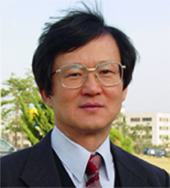 Prof. Lee Plants Commemorative Flower at NUAA
Prof. Lee Plants Commemorative Flower at NUAA
Professor In Lee of Aerospace Engineering planted a commemorative flower - Hibiscus, the national flora of South Korea - at Nanjing University of Aeronautics and Astronautics (NUAA) on May 25, 2007. While some Chinese Nobel laureates have planted commemorative trees, Professor Lee is the first foreigner who has planted a commemorative flower at NUAA. His planting is expected to contribute to opening academic and research exchanges between South Korea and China.
NUAA is the top university of China in the field of Aerospace Engineering and a technical university consisting of 2,800 faculty and staff and 26,000 students.
NUAA has colleges of Aerospace Engineering, Science, Engineering, Management, Art, Humanity, Foreign Language, and International Education and actively promotes international academic and research exchanges and international student program.
2007.06.12 View 14013
Prof. Lee Plants Commemorative Flower at NUAA
Prof. Lee Plants Commemorative Flower at NUAA
Professor In Lee of Aerospace Engineering planted a commemorative flower - Hibiscus, the national flora of South Korea - at Nanjing University of Aeronautics and Astronautics (NUAA) on May 25, 2007. While some Chinese Nobel laureates have planted commemorative trees, Professor Lee is the first foreigner who has planted a commemorative flower at NUAA. His planting is expected to contribute to opening academic and research exchanges between South Korea and China.
NUAA is the top university of China in the field of Aerospace Engineering and a technical university consisting of 2,800 faculty and staff and 26,000 students.
NUAA has colleges of Aerospace Engineering, Science, Engineering, Management, Art, Humanity, Foreign Language, and International Education and actively promotes international academic and research exchanges and international student program.
2007.06.12 View 14013 -
 KAIST To Open Cultural Activity Classes
KAIST To Open Cultural Activity Classes
KAIST will open classes of Cultural Activity (CA) this fall semester, and many of them will be instructed by students.
CA classes are regular classes opened to create a better atmosphere on campus and broaden students’ sociality and provide opportunities of diverse experiences to enhance students’ qualities as elite scientists. All classes will be provided at night or weekend to allow students to take part in cultural activities of their interests.
Total 21 classes, such as animation, photo-taking, electronic guitar, classic guitar, Ocarina, Inline skate, Haedong kendo, weight training, yoga, Tae-keuk-kwon, aerobic, recreation, hacking, drum playing, etc., will be provided, and 15 of them, such as animation, photo-taking, electronic guitar, etc., will be lectured by students. The students-lectured classes have been selected after thorough examination of lecture plans.
Leadership Mileage Points (LMP) will be offered to students both of lecturing and attending CA classes and, in the case of freshmen, a credit will be admitted for the obligatory subject of leadership demanding two credits. A larger number of students than the enrollment capacity have applied for the classes within a day. CA classes are expected to change campus life in KAIST.
Meanwhile, students will be given LMPs for each of their activities, such as humanity/ leadership lectures, on-campus voluntary services, off-campus voluntary services, mind and body training, exchange student activity, field experiences, etc., and will be issued a leadership certificate graded as ‘silver’, ‘gold’, ‘platinum’ and ‘diamond’ according to the accumulative LMPs in graduation. A personal certificate describing the details of on-campus activities by students will also be issued to help students’ employment activities.
KAIST has recently introduced a new two-dimensional admission policy that evaluates applicants’ humanities as well as academic achievements, based on President Suh’s judgment that students with expertise but no humanity will not be able to create the bright future of Korea. The LMP has the same purport as the new policy in that enrolled students are also to be evaluated in two aspects - humanity and academic achievements, and will bring a new paradigm to Korean education.
2007.06.08 View 13327
KAIST To Open Cultural Activity Classes
KAIST To Open Cultural Activity Classes
KAIST will open classes of Cultural Activity (CA) this fall semester, and many of them will be instructed by students.
CA classes are regular classes opened to create a better atmosphere on campus and broaden students’ sociality and provide opportunities of diverse experiences to enhance students’ qualities as elite scientists. All classes will be provided at night or weekend to allow students to take part in cultural activities of their interests.
Total 21 classes, such as animation, photo-taking, electronic guitar, classic guitar, Ocarina, Inline skate, Haedong kendo, weight training, yoga, Tae-keuk-kwon, aerobic, recreation, hacking, drum playing, etc., will be provided, and 15 of them, such as animation, photo-taking, electronic guitar, etc., will be lectured by students. The students-lectured classes have been selected after thorough examination of lecture plans.
Leadership Mileage Points (LMP) will be offered to students both of lecturing and attending CA classes and, in the case of freshmen, a credit will be admitted for the obligatory subject of leadership demanding two credits. A larger number of students than the enrollment capacity have applied for the classes within a day. CA classes are expected to change campus life in KAIST.
Meanwhile, students will be given LMPs for each of their activities, such as humanity/ leadership lectures, on-campus voluntary services, off-campus voluntary services, mind and body training, exchange student activity, field experiences, etc., and will be issued a leadership certificate graded as ‘silver’, ‘gold’, ‘platinum’ and ‘diamond’ according to the accumulative LMPs in graduation. A personal certificate describing the details of on-campus activities by students will also be issued to help students’ employment activities.
KAIST has recently introduced a new two-dimensional admission policy that evaluates applicants’ humanities as well as academic achievements, based on President Suh’s judgment that students with expertise but no humanity will not be able to create the bright future of Korea. The LMP has the same purport as the new policy in that enrolled students are also to be evaluated in two aspects - humanity and academic achievements, and will bring a new paradigm to Korean education.
2007.06.08 View 13327 -
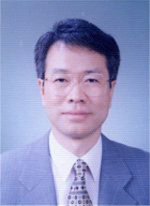 Prof. Whang Named Distinguished Database Profile by ACM SIGMOD
Professor Kyu-Young Whang of Computer Sciences has been named as Distinguished Database Profile (DDP) by Association for Computing Machinery Special Interest Group on Management Of Data (ACM SIGMOD).
DDP is a section of ACM SIGMOD Record that introduces researchers who have made significant global contributions in database field.
Thus far, about 20 researchers including Jeff Ullman and Jim Gray have been named as DDPs for their achievements such as establishment of new theories and technologies in database field, and Prof. Hwang is the first researcher named as DDP in the Asian-Pacific region.
Prof. Whang’s interview (directed by Marianne Winslett, Professor of UIUC, and Eric Bina, co-founder of Netscape) can be seen on http://www.sigmod.org/interviews and will be published at ACM SIGMOD Record in 2008.
2007.06.07 View 15627
Prof. Whang Named Distinguished Database Profile by ACM SIGMOD
Professor Kyu-Young Whang of Computer Sciences has been named as Distinguished Database Profile (DDP) by Association for Computing Machinery Special Interest Group on Management Of Data (ACM SIGMOD).
DDP is a section of ACM SIGMOD Record that introduces researchers who have made significant global contributions in database field.
Thus far, about 20 researchers including Jeff Ullman and Jim Gray have been named as DDPs for their achievements such as establishment of new theories and technologies in database field, and Prof. Hwang is the first researcher named as DDP in the Asian-Pacific region.
Prof. Whang’s interview (directed by Marianne Winslett, Professor of UIUC, and Eric Bina, co-founder of Netscape) can be seen on http://www.sigmod.org/interviews and will be published at ACM SIGMOD Record in 2008.
2007.06.07 View 15627 -
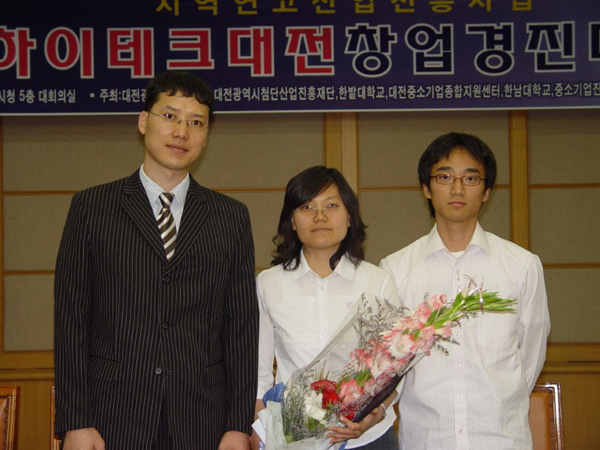 KAIST Students Wins Gold Prize at Technical Idea Contest
KAIST Students Wins Gold Prize at Technical Idea Contest
- Receive the gold prize at the 3rd High-Tech Daejeon Technical Idea Contest for Company Establishment- For the development of a new system to convert complex web page addresses to short and meaningful addresses
Sang-Hoon Kim, Song-Hwa Chae and Dong-Hun Lee of Chemical and Biomolecular Engineering won the gold prize at the prospective company establishment part in the 3rd High-Tech Daejeon Technical Idea Contest for Company Establishment on May 21 for their valuable development of ‘Web Page Address Clipping System’.
So far, simplified web page addresses include special characters, which make the addresses long and complex. That is, the current address simplification service combines meaningless random words and numerals to create addresses when web page addresses are entered. In this case, the addresses are not easy to share with others and reuse several times since they are difficult to memorize.
However, the ‘Web Page Address Clipping System’ shortens meaningless long addresses. In addition, the improved address simplification service will provide user’s own addresses, and statistics and ranking to clipping addresses frequently used.
Based on this technology, Kim and Chae are now preparing to open a company called ‘URLClip’ under the auspice of Professor Tae-Yong Yang and Researcher In-Soo Kim, KAIST Entrepreneurship Center. They are also expanding their service areas onto clipping library for individual users, host name services for enterprises, etc. and developing tool bar, RSS service (RSS is an acronym of RDF (or Rich) Site Summary. It refers to a service that automatically and easily provides frequently updated contents such as news and blogs to users), etc. to improve users’ conveniences.
URLClip (http://www.urlclip.net) is a next generation portal site, which is expected to provide a variety of individualized services based on Web Page Address Clipping Service and to be used by many enterprises as well as individual users who wish to enhance their access to useful contents.
“Chemical & Biomolecular Engineering Professor Sun-Won Park has offered lots of helps and supports, so I could decide to commercialize the developed technologies. The application of this technology to real life will allow further comfortable uses of internet to users,” Kim said.
Narae Team received the best prize last April at the 2nd Pre-Star Venture Company-Opening Contest hosted by KAIST and Hanbat Univeristy, and the technology is pending a patent application.
Inquiry:Sang-Hoon Kim, Dep. of Chemical and Biomolecular Engineering, H.P. 010-4754-9947Song-Hwa Chae, Dep. of Chemical and Biomolecular Engineering, H.P. 010-7223-9947Home page: http://www.urlclip.netEmail: urlclip@urlclip.net
2007.06.05 View 17677
KAIST Students Wins Gold Prize at Technical Idea Contest
KAIST Students Wins Gold Prize at Technical Idea Contest
- Receive the gold prize at the 3rd High-Tech Daejeon Technical Idea Contest for Company Establishment- For the development of a new system to convert complex web page addresses to short and meaningful addresses
Sang-Hoon Kim, Song-Hwa Chae and Dong-Hun Lee of Chemical and Biomolecular Engineering won the gold prize at the prospective company establishment part in the 3rd High-Tech Daejeon Technical Idea Contest for Company Establishment on May 21 for their valuable development of ‘Web Page Address Clipping System’.
So far, simplified web page addresses include special characters, which make the addresses long and complex. That is, the current address simplification service combines meaningless random words and numerals to create addresses when web page addresses are entered. In this case, the addresses are not easy to share with others and reuse several times since they are difficult to memorize.
However, the ‘Web Page Address Clipping System’ shortens meaningless long addresses. In addition, the improved address simplification service will provide user’s own addresses, and statistics and ranking to clipping addresses frequently used.
Based on this technology, Kim and Chae are now preparing to open a company called ‘URLClip’ under the auspice of Professor Tae-Yong Yang and Researcher In-Soo Kim, KAIST Entrepreneurship Center. They are also expanding their service areas onto clipping library for individual users, host name services for enterprises, etc. and developing tool bar, RSS service (RSS is an acronym of RDF (or Rich) Site Summary. It refers to a service that automatically and easily provides frequently updated contents such as news and blogs to users), etc. to improve users’ conveniences.
URLClip (http://www.urlclip.net) is a next generation portal site, which is expected to provide a variety of individualized services based on Web Page Address Clipping Service and to be used by many enterprises as well as individual users who wish to enhance their access to useful contents.
“Chemical & Biomolecular Engineering Professor Sun-Won Park has offered lots of helps and supports, so I could decide to commercialize the developed technologies. The application of this technology to real life will allow further comfortable uses of internet to users,” Kim said.
Narae Team received the best prize last April at the 2nd Pre-Star Venture Company-Opening Contest hosted by KAIST and Hanbat Univeristy, and the technology is pending a patent application.
Inquiry:Sang-Hoon Kim, Dep. of Chemical and Biomolecular Engineering, H.P. 010-4754-9947Song-Hwa Chae, Dep. of Chemical and Biomolecular Engineering, H.P. 010-7223-9947Home page: http://www.urlclip.netEmail: urlclip@urlclip.net
2007.06.05 View 17677 -
 KAIST Graduate School of Information Media Management Opens Blog for Web2.0 Lectures
KAIST Graduate School of Information Media Management Opens Blog for Web2.0 Lectures
- http://webtwo.kaist.ac.kr
The Graduate School of Media Information Management of KAIST (President Nam Pyo Suh) has opened a blog to share the contents of and hear various opinions on Web2.0 Lecture programs, established this semester.
Web2.0 Lecture refers to a program to deliver and educate a variety of ongoing projects and market responses, along with scholarly and theoretical accesses in a real-time basis. The lectures will be made by invited experts in the fields of web and mobile, which are yet to be established academically, but have created huge markets. Lectures on recent hot issues, such as the relevant technologies, trends, cultures, policies, and markets of Web2.0, will be firstly made.
The blog provides highlight moving pictures of the lectures and comments by professors and assistants, and is expected to deliver high quality contents to faculty and students interested in Web2.0. In addition, professors and assistants will share opinions online with lecture takers.
Professors in charge: Prof. Sunghee Kim, Prof. Dongwan Cha, Prof. Choonghee Ryu, Prof. Jaesun HanAssistants in charge: Jinwoo Park, Daejin Chung, Kyungeun Sung.
Contents:1. Trens & Internet: Market and Technology① Web2.0 overview (Sangoo Cho, Managing Director of KTH)② Collective Intelligence (PRAK, President of Mar.gar.in)③ UCC (Jangho Kim, Manger, KBSi)④ Blog (Jeongseok Noh, President of T&C)⑤ Copyright and CCL (Jongsoo Yoon, Judge of CCK)⑥ Long-tail (Hyogon Chang, President of Innomove)⑦ Search 2.0 (Byungkook Chun, President of Searching Engine Mast)
2. Web2.0 and Beyond① Web2.0 & Convergence (Kyungjeon Lee, Professor of Kyunghee University)② Web2.0 & business (Sooman Park, President of Double Track)③ Social Computing (Sangki Han, President of Opinity AP)④ Web2.0 & Media (Yongseok Hwang, Professor of Kunkook University)⑤ Attention Economy (Taweoo Ki, Taewoo’s log)⑥ Mobile Web2.0 (Jonghong Chun, Senior researcher of ETRI)
2007.05.14 View 14555
KAIST Graduate School of Information Media Management Opens Blog for Web2.0 Lectures
KAIST Graduate School of Information Media Management Opens Blog for Web2.0 Lectures
- http://webtwo.kaist.ac.kr
The Graduate School of Media Information Management of KAIST (President Nam Pyo Suh) has opened a blog to share the contents of and hear various opinions on Web2.0 Lecture programs, established this semester.
Web2.0 Lecture refers to a program to deliver and educate a variety of ongoing projects and market responses, along with scholarly and theoretical accesses in a real-time basis. The lectures will be made by invited experts in the fields of web and mobile, which are yet to be established academically, but have created huge markets. Lectures on recent hot issues, such as the relevant technologies, trends, cultures, policies, and markets of Web2.0, will be firstly made.
The blog provides highlight moving pictures of the lectures and comments by professors and assistants, and is expected to deliver high quality contents to faculty and students interested in Web2.0. In addition, professors and assistants will share opinions online with lecture takers.
Professors in charge: Prof. Sunghee Kim, Prof. Dongwan Cha, Prof. Choonghee Ryu, Prof. Jaesun HanAssistants in charge: Jinwoo Park, Daejin Chung, Kyungeun Sung.
Contents:1. Trens & Internet: Market and Technology① Web2.0 overview (Sangoo Cho, Managing Director of KTH)② Collective Intelligence (PRAK, President of Mar.gar.in)③ UCC (Jangho Kim, Manger, KBSi)④ Blog (Jeongseok Noh, President of T&C)⑤ Copyright and CCL (Jongsoo Yoon, Judge of CCK)⑥ Long-tail (Hyogon Chang, President of Innomove)⑦ Search 2.0 (Byungkook Chun, President of Searching Engine Mast)
2. Web2.0 and Beyond① Web2.0 & Convergence (Kyungjeon Lee, Professor of Kyunghee University)② Web2.0 & business (Sooman Park, President of Double Track)③ Social Computing (Sangki Han, President of Opinity AP)④ Web2.0 & Media (Yongseok Hwang, Professor of Kunkook University)⑤ Attention Economy (Taweoo Ki, Taewoo’s log)⑥ Mobile Web2.0 (Jonghong Chun, Senior researcher of ETRI)
2007.05.14 View 14555 -
 Research Outputs over Carbon Nanotube by Prof. Choi Selected as Research Highlight by ACS
Research Outputs over Carbon Nanotube by Prof. Choi Selected as Research Highlight by ACS
Research Outputs over Carbon Nanotube by Prof. Choi Selected as Research Highlight by ACS
A research team headed by Seong-Min Choi, a professor of Nuclear and Quantum Engineering, KAIST, has developed technologies to stably disperse carbon nanotube particles in aqueous solutions and organic solvents, essential for industrial applications of carbon nanotube, and discovered the dispersion characteristics of carbon nanotube. The research outputs have been published by ‘Advanced materials’ (19, 929, 2007), the most distinguished journal in Material Science field, and introduced as Research Highlight at the May 7th edition of ‘Heart Cut’ by the American Chemical Society (ACS).
A number of processes for industrial applications of carbon nanotube require the dispersion of carbon nanotube in aqueous solutions or organic solvents, and thus far, surfactant particles or DNAs have been used to disperse carbon nanotube particles. However, they have shortcomings of easy destruction of dispersion. In order to overcome such shortcomings, Prof. Choi’s team produced carbon nanotube particle-dispersed aqueous solutions by using surfactant particles and then polymerized surfactant particles absorbed to the surfaces of carbon nanotube in situ to develop carbon nanotube with hydrophile and safe surfaces. The functional carbon nanotube so obtained shows features of easy dispersion in aqueous solutions and organic solvents even after being processed, such as freeze drying, therefore, is expected to significantly contribute to the development of application technologies of carbon nanotubes. Tae-Hwan Kim and Chang-Woo Doh, both doctoral students, played key roles in the researches carried out under the auspices of the Ministry of Science and Technology (MOST) as a nuclear power R&D project, and the relevant technologies were filed for patent applications.
Figures: Carbon nanotube before polymerization (left), carbon nanotube polymerized with surfactant particles (right)
2007.05.14 View 15545
Research Outputs over Carbon Nanotube by Prof. Choi Selected as Research Highlight by ACS
Research Outputs over Carbon Nanotube by Prof. Choi Selected as Research Highlight by ACS
Research Outputs over Carbon Nanotube by Prof. Choi Selected as Research Highlight by ACS
A research team headed by Seong-Min Choi, a professor of Nuclear and Quantum Engineering, KAIST, has developed technologies to stably disperse carbon nanotube particles in aqueous solutions and organic solvents, essential for industrial applications of carbon nanotube, and discovered the dispersion characteristics of carbon nanotube. The research outputs have been published by ‘Advanced materials’ (19, 929, 2007), the most distinguished journal in Material Science field, and introduced as Research Highlight at the May 7th edition of ‘Heart Cut’ by the American Chemical Society (ACS).
A number of processes for industrial applications of carbon nanotube require the dispersion of carbon nanotube in aqueous solutions or organic solvents, and thus far, surfactant particles or DNAs have been used to disperse carbon nanotube particles. However, they have shortcomings of easy destruction of dispersion. In order to overcome such shortcomings, Prof. Choi’s team produced carbon nanotube particle-dispersed aqueous solutions by using surfactant particles and then polymerized surfactant particles absorbed to the surfaces of carbon nanotube in situ to develop carbon nanotube with hydrophile and safe surfaces. The functional carbon nanotube so obtained shows features of easy dispersion in aqueous solutions and organic solvents even after being processed, such as freeze drying, therefore, is expected to significantly contribute to the development of application technologies of carbon nanotubes. Tae-Hwan Kim and Chang-Woo Doh, both doctoral students, played key roles in the researches carried out under the auspices of the Ministry of Science and Technology (MOST) as a nuclear power R&D project, and the relevant technologies were filed for patent applications.
Figures: Carbon nanotube before polymerization (left), carbon nanotube polymerized with surfactant particles (right)
2007.05.14 View 15545 -
 3rd KAIST Junghoon Cho Academic Award Ceremony
3rd KAIST Junghoon Cho Academic Award Ceremony
3rd KAIST Junghoon Cho Academic Award CeremonyAcademic award to Sehoon Kim, scholarship to Yougdae Kim, Daehyun Kim, Sunchul Park
KAIST (President Nam Pyo Suh) had the 3rd KAIST Junghoon Cho Academic Award ceremony at the conference room in the main administration building, Friday, May 11, at 2 pm with President Suh and the bereaved family attended.
Sehoon Kim, a doctoral researcher at the Agency for Defense Development (ADD) and KAIST graduate, was named as the 3rd recipient of the Junghoon Cho Academic Award in recognition of his achievement that establishes the design method of supersonic vacuum device. The scholarship was granted to Yongdae Kim (doctoral student of Aerospace Engineering, KAIST), Daehyun Kim (master student of Mechanical Engineering, Korea University), and Suncheol Park (senior of the Attached High School to the College of Education at kongju National University). The prize money is 20 million won, and the scholarship amounts to 3 million and 2 million won for university and high school students, respectively.
“Junghoon Cho Academic Award” is a meaningful award established by the donation of compensation money and personal properties, amounting to about 470 billion won, by Donggil Cho, father of the late Ph.D. Junghoon Cho who died at the explosion accident at the Wind Tunnel Laboratory in 2002, ▲ Ph.D. Sehonn Kim
2007.05.14 View 16368
3rd KAIST Junghoon Cho Academic Award Ceremony
3rd KAIST Junghoon Cho Academic Award Ceremony
3rd KAIST Junghoon Cho Academic Award CeremonyAcademic award to Sehoon Kim, scholarship to Yougdae Kim, Daehyun Kim, Sunchul Park
KAIST (President Nam Pyo Suh) had the 3rd KAIST Junghoon Cho Academic Award ceremony at the conference room in the main administration building, Friday, May 11, at 2 pm with President Suh and the bereaved family attended.
Sehoon Kim, a doctoral researcher at the Agency for Defense Development (ADD) and KAIST graduate, was named as the 3rd recipient of the Junghoon Cho Academic Award in recognition of his achievement that establishes the design method of supersonic vacuum device. The scholarship was granted to Yongdae Kim (doctoral student of Aerospace Engineering, KAIST), Daehyun Kim (master student of Mechanical Engineering, Korea University), and Suncheol Park (senior of the Attached High School to the College of Education at kongju National University). The prize money is 20 million won, and the scholarship amounts to 3 million and 2 million won for university and high school students, respectively.
“Junghoon Cho Academic Award” is a meaningful award established by the donation of compensation money and personal properties, amounting to about 470 billion won, by Donggil Cho, father of the late Ph.D. Junghoon Cho who died at the explosion accident at the Wind Tunnel Laboratory in 2002, ▲ Ph.D. Sehonn Kim
2007.05.14 View 16368